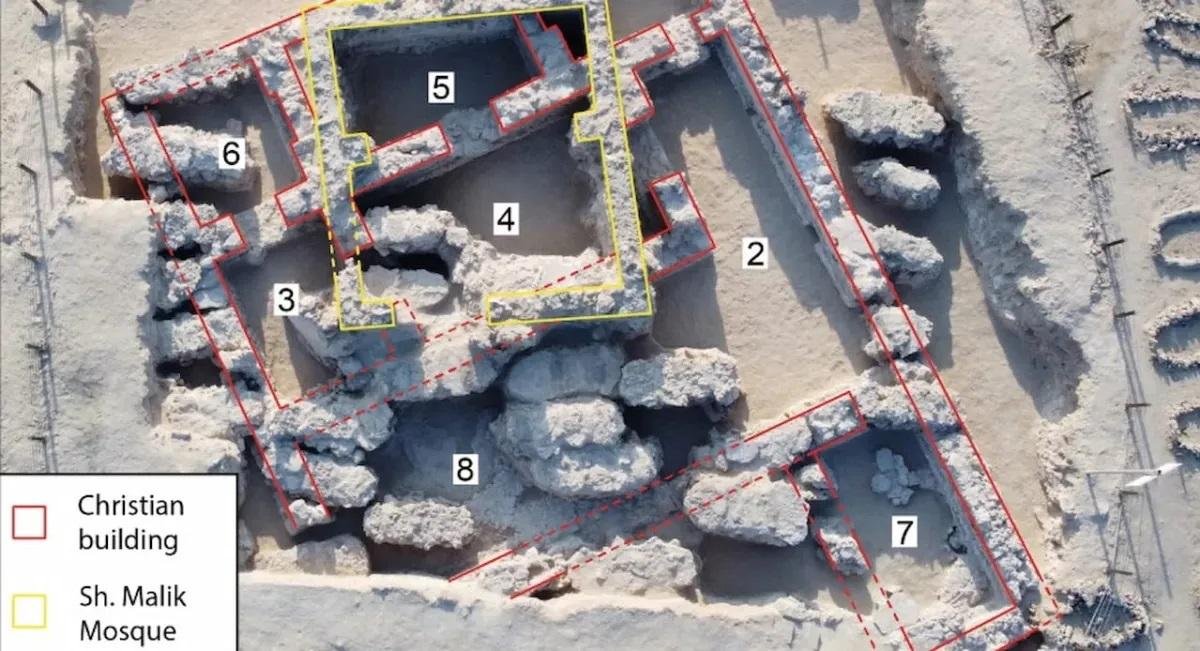Archaeologists from the University of Exeter, in collaboration with the Bahrain Authority for Culture and Antiquities, have unearthed the first physical evidence of a long-lost Christian community in Samahij, Bahrain.
 The building survived as it had a later mosque built on top of it. Credit: University of Exeter
The building survived as it had a later mosque built on top of it. Credit: University of Exeter
This significant discovery reveals the early presence of Christianity in the Persian Gulf, particularly the Church of the East, also known as the Nestorian Church, which thrived in the region before the widespread conversion to Islam in the 7th century CE.
The Nestorian Church, one of the three major branches of Nicene Eastern Christianity, emerged from Christological controversies and developed its own theological interpretations and liturgical practices. According to tradition, it was founded by Thomas the Apostle in the first century CE. The church maintained a significant presence in the Gulf until the Islamic era began in 610 CE, leading to large-scale conversions.
The site in Samahij was radiocarbon dated to be occupied from the mid-4th to the mid-8th centuries CE. Excavations revealed a large, well-constructed building with stone walls, plastered interiors, and plaster floors. This structure, believed to be the palace of the Bishop of Meshmahig (a historical name for Samahij), featured eight rooms, including a kitchen, a refectory or dining room, a possible workroom, and three living rooms. The building survived through the centuries because a mosque was later built over it.
Historical records indicate a tumultuous relationship between Meshmahig and the central church authorities. A bishop from Meshmahig was excommunicated in 410 CE, and another was condemned in the mid-7th century for challenging church unity.
Professor Timothy Insoll of the Insтιтute of Arab and Islamic Studies at the University of Exeter, who co-led the excavation, stated, “This is the first physical evidence found of the Nestorian Church in Bahrain and gives a fascinating insight into how people lived, worked, and worshiped.”
The building’s occupants enjoyed a high standard of living. Evidence suggests they consumed pork, fish, shellfish, and various crops, though pork disappeared from their diet after the Islamic conversion. The discovery of carnelian semi-precious stone beads, Indian ceramics, and numerous pottery fragments indicates active trade, particularly with India. The presence of glᴀssware, including small wine glᴀsses, and copper coins minted in the Sasanian Empire further highlights their affluent lifestyle.
Spindle whorls and copper needles found at the site suggest textile production, possibly for use in worship. The Christian idenтιтy of the building’s inhabitants is unmistakable, evidenced by three plaster crosses and graffiti featuring early Christian symbols like the Chi-Rho and a fish.
The excavation was conducted between 2019 and 2023 as part of a joint project led by Professor Insoll and Dr. Salman Almahari from the Bahrain Authority for Culture and Antiquities. Plans are underway to develop a museum at the site to preserve and present these findings. The museum is expected to open in 2025, offering visitors a glimpse into the rich history of early Christianity in the Persian Gulf.
University of Exeter





